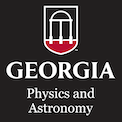Small reactive organic molecules are key intermediates in interstellar chemistry, leading to the formation of biologically-relevant species as stars and planets form. These molecules are identified in space via their pure rotational spectral fingerprints in the far-IR or terahertz (THz) regime. Despite their fundamental roles in the formation of life, many of these molecules have not been spectroscopically characterized in the laboratory, and therefore cannot be studied via observational astronomy. The reason for this lack of fundamental laboratory information is the challenge of spectroscopy in the THz regime combined with the challenge of studying unstable molecules. Ions, radicals, and small reactive organics tend to be produced in trace quantities, often at high energies, and therefore have weak laboratory spectra. In addition, THz spectrometers have historically lagged behind those in other wavelength regimes because of a lack of sources and detectors that provide the power and sensitivity needed for such studies. The laboratory astrochemistry portion of my research program combines innovative spectroscopic approaches that seek to increase spectral sensitivity in the THz regime with novel chemical production mechanisms for species of astrochemical interest. Our laboratory work involves characterization of astrophysically-relevant unstable species, including small radicals that are the products of photolysis reactions, organic ions formed via plasma discharges, and small reactive organics that form via O(1D) insertion reactions. In this seminar, I will present recent results from our laboratory studies, and discuss these results in the broader context of my integrative research program that encompasses laboratory spectroscopy, observational astronomy, and astrochemical modeling.
Events Calendar View
-
Departmental Colloquium
Nov 15, 2018
Prebiotic Astrochemistry in the "THz-Gap"
-
CSP Lunch Seminar
Nov 27, 2018
Computational Design of Small Molecule Catalysts
-
Departmental Colloquium
Nov 29, 2018
Infrared Spectroscopy of Cold Organic Ions in the Gas Phase: Potential Interstellar Molecules
Cold cations of small hydrocarbon molecules, i.e., carbocations, are produced in pulsed supersonic molecular beams by a pulsed discharge source. These ions are mass-selected and studied with infrared photodissociation spectroscopy in a time- of-flight mass spectrometer using the method of rare gas atom complex predissociation. Infrared spectra are compared to the predictions of theory (DFT, MP2, CCSD(T)) to elucidate the structures of these ions, their isomers and the potential energy surfaces connecting them. The carbocation species studied include C2H3+, C3H5+, C3H3+, protonated benzene, and protonated naphthalene. Several of these exhibit more than one isomer, allowing investigation of the multiple minima on their potential surfaces. Protonated naphthalene has spectral lines relevant for the three of the main Unassigned Infrared Bands (UIR's) seen in emission from interstellar gas clouds. Oxocations studied with the same methodology include protonated formaldehyde, the acetyl cation, methanol cation and formaldehyde cation.
-
Departmental Colloquium
Jan 10, 2019
A Song of Ice and Fire --- Dynamics of Planets Hot and Cold
The unexpected diversity of planetary systems has posed challenges to our classical understanding of planetary formation. For instance, Jupiter sized planets have been detected with short orbital periods of a few days, misaligned with respect to the spin- axis of their host stars. I will first describe the dynamical interactions between an outer perturber and the inner planet, which naturally leads to the formation of such misaligned hot Jupiters. Next, I will discuss a similar dynamical process in the outer Solar System, far away from our Sun, which causes the observed clustering of extreme trans-Neptunian objects. This can constrain properties of a possible outer planet, Planet Nine, in our own Solar System.
-
CSP Lunch Seminar
Jan 15, 2019
Incommensurability and phase transitions in two-dimensional XY models with Dzyaloshinskii-Moriya interactions
-
Departmental Colloquium
Jan 17, 2019
Attosecond Probing of Solid-State Dynamics
A new method of probing solid-state materials involves laser pump-probe measurements with attosecond light pulses produced by the process of high harmonic generation. Such radiation in the extreme ultraviolet or x-ray region interrogates core level transitions. The simple act of charge transfer from one atom to another or excitation of the band gap in a solid unveils many fundamental aspects that can be explored from a new viewpoint, on ever-shorter timescales. These include the extremely fast processes of core-level screening and broadening, coherences, and scattering, as well as electron configuration rearrangements. Topics in this presentation include semiconductor band gap excitation, charge transfer in metal oxides, core-level excitons in 2D metal dichalcogenides, and strong-field-induced Floquet Bloch bands. Lifetimes, scattering, and electronic coherences, as well as theoretical comparisons, will be considered. Coherent dynamics measurements in the extreme ultraviolet provide a novel and powerful probe for nonequilibrium states of matter.
Page 88 of 121, showing 6 records out of 723 total, starting on record 523, ending on 528


